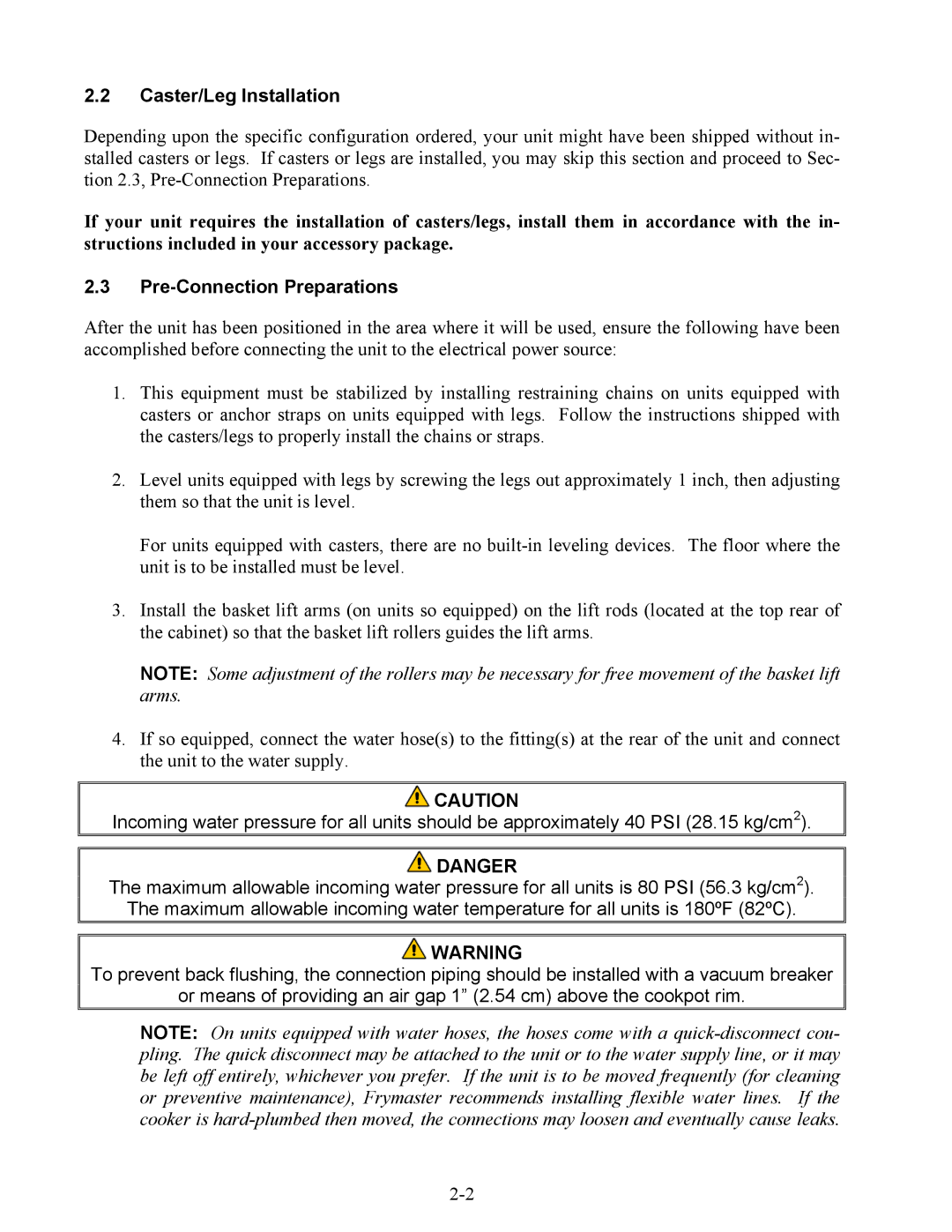17EC, 17ECS, EWBS, ESW specifications
Frymaster, a leader in the foodservice equipment industry, offers a range of fryers designed to enhance productivity and quality in commercial kitchens. Among these, the Frymaster ESW, EWBS, 17ECS, and 17EC models stand out due to their innovative features, advanced technologies, and user-friendly designs.The Frymaster ESW fryer is engineered for high-efficiency frying while maintaining excellent food quality. It incorporates a built-in oil filtration system, allowing operators to extend the life of oil, reduce frying costs, and ensure consistent product quality. The ESW is designed with energy efficiency in mind, which not only minimizes operational costs but also helps restaurants reduce their environmental footprint. Its programmable controls enable seamless operation, and the easy-to-read display assists staff in monitoring frying times, temperatures, and oil conditions.
The EWBS model is equipped with a robust design that focuses on convenience and reliability. One of its key features is its large fry pot, which enables high-capacity frying, reducing cooking time and increasing output during peak hours. The EWBS fryer also maximizes versatility, allowing operators to prepare a wide variety of menu items. It features adjustable frying baskets, which are designed to accommodate foods of different sizes. Additionally, the model includes energy-efficient burners that result in quicker recovery times and lower gas consumption.
The 17ECS and 17EC models are designed for compact spaces without sacrificing performance. Featuring digital controls and simplified interfaces, they provide operators with precise temperature management. The 17ECS is known for its superior oil management system, which enhances oil life and maintains food quality. The 17EC, on the other hand, offers a variety of programmable cooking options, making it ideal for establishment with diverse culinary needs.
Both the 17ECS and 17EC also emphasize safety, incorporating features such as automatic shutoff and cool-touch handles, which help prevent burns and accidents in fast-paced kitchen environments. These fryers are built with durable materials that ensure longevity, making them a worthy investment for any restaurant or foodservice operation.
Together, the Frymaster ESW, EWBS, 17ECS, and 17EC models represent a commitment to innovation in commercial frying technology, combining energy efficiency, user-friendly interfaces, and versatile cooking capabilities that cater to the needs of modern kitchens. As restaurants continue to evolve, these fryers provide the reliability and performance necessary to meet demand and maintain high-quality standards.

